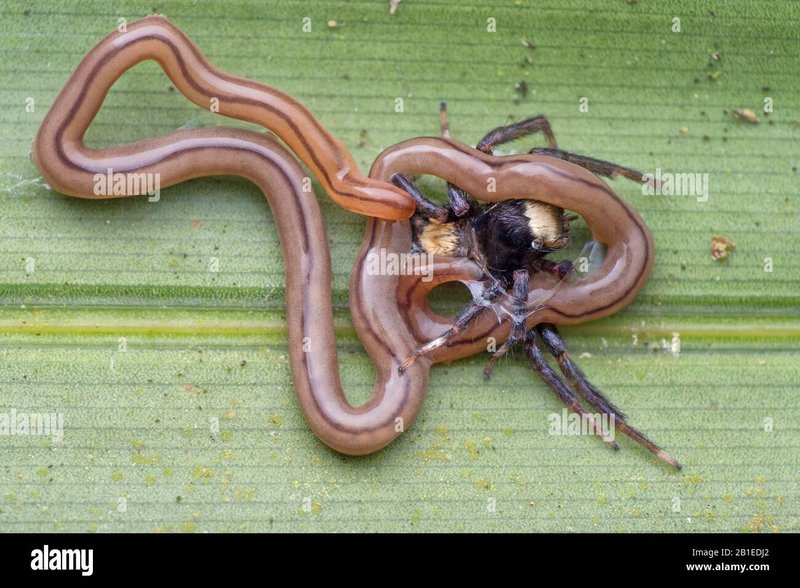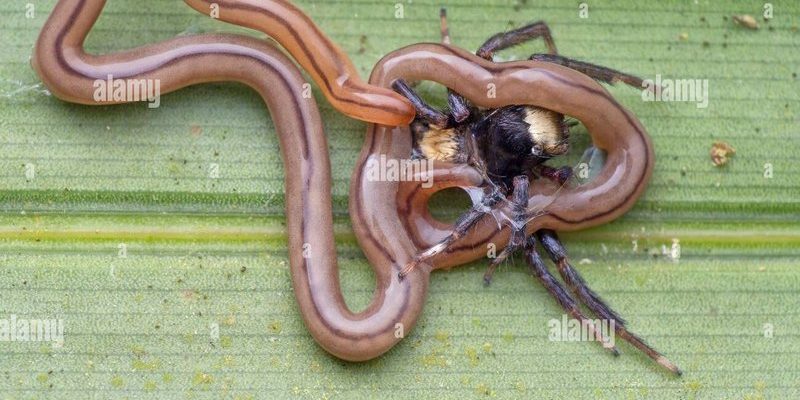
Imagine a ribbon worm as a sea spaghetti—long, flexible, and sometimes colorful. They belong to a group called nemerteans and can be found in various marine environments, from shallow coastal waters to deeper ocean floors. Their diets are as diverse as the environments they inhabit, and understanding what they eat gives us insight into their role in the ecosystem. Here’s the thing: ribbon worms are quite the predators!
Understanding the Ribbon Worm Diet
Ribbon worms are carnivorous, which means they primarily eat other animals. They’re not picky eaters, but their diet mainly consists of small invertebrates. Think of them as the stealth hunters of the ocean. These worms can stretch their bodies to ensnare prey, much like a snake striking its target.
Many ribbon worms feast on **tiny crustaceans**, like amphipods and copepods. These tiny creatures are abundant in marine habitats and provide a good source of nutrition. Some ribbon worms even hunt down other worms or small fish. By capturing these animals, ribbon worms play a crucial role in keeping their ecosystems balanced, helping control the populations of various species.
You might be wondering, “How do they catch their food?” Well, ribbon worms have a special feeding structure called a proboscis. This is a long, stretchy appendage that can extend from their body to ensnare unsuspecting prey. Once the prey is caught, they use digestive enzymes to break it down before consuming it. It’s quite a clever system!
Variety in Their Diet
While ribbon worms generally eat small invertebrates, the specifics can vary greatly depending on their environment. In richer ecosystems, they might have access to a wider variety of food. For instance, **benthic ribbon worms**—those that live on or near the ocean floor—tend to eat more bottom-dwelling creatures like **polychaete worms**.
On the other hand, ribbon worms that inhabit rocky tide pools might feast on **tiny mollusks** or even some algae. It’s fascinating how adaptable these creatures are! They can switch up their diets based on availability, which helps them survive in fluctuating conditions.
In essence, the ribbon worm diet showcases the diversity of life in the ocean. Its ability to adjust to different food sources demonstrates the importance of adaptability in nature. Just like us humans, their diet varies and depends on what’s available at the time!
Feeding Strategies
Ribbon worms have some pretty cool feeding strategies that make them effective hunters. One of the most interesting aspects of their diet is how they use their **proboscis**. This long, worm-like appendage can be likened to a fishing line cast out into the water.
When a ribbon worm spots its prey, it can shoot out its proboscis at lightning speed. This mechanism not only helps them capture prey but also keeps them safe from larger predators. By being quick and agile, they can often snag a meal before anyone notices they’re there!
In addition, some ribbon worms practice a form of scavenging. When they come across dead or decaying animals, they’ll happily feast on that too. This ability to capitalize on different food sources helps them thrive in their ecosystems, ensuring they always have something to snack on.
Ecological Importance of Ribbon Worms
Understanding what ribbon worms eat isn’t just about their diets; it’s also about how they fit into the larger ecological picture. As predators, they help control the populations of smaller invertebrates. By doing so, they prevent overpopulation, which can lead to unbalanced ecosystems.
Furthermore, their scavenging habits play a role in nutrient cycling. When they consume dead animals, they break them down and return important nutrients back into the environment. This process helps keep the marine ecosystem healthy and vibrant.
You could think of ribbon worms as nature’s cleanup crew. They help maintain the balance of life in the oceans, ensuring that everything works in harmony. Without them, the food web would be disrupted, leading to potential issues for many other marine species.
Common Enemies and Challenges
Though ribbon worms are skilled predators, they aren’t without their challenges. They face threats from larger predators, such as fish and sea birds. To avoid becoming a meal themselves, many ribbon worms have evolved to blend in with their surroundings. Their colors and patterns can help them camouflage against rocky surfaces or seaweed.
Another challenge for ribbon worms is habitat destruction. As coastal areas are developed or polluted, the delicate ecosystems they rely on become threatened. This loss of habitat can affect their food sources and, in turn, their survival.
It’s a tough world out there for these little hunters! But, like many creatures in the ocean, they continue to adapt and find ways to thrive, even in the face of adversity.
So, what do ribbon worms feed on? Primarily, they’re carnivorous predators, munching on small invertebrates and occasionally scavenging for dead animals. Their diet varies based on their environment, showcasing their adaptability and ecological importance. These fascinating creatures are more than just sea spaghetti; they play a vital role in maintaining the balance of marine ecosystems.
As you think about the next beach trip or ocean dive, consider the ribbon worm lurking in the shadows, quietly doing its part. There’s a whole world beneath the waves, and understanding these unique diets helps us appreciate the intricate connections that sustain life in the ocean. So the next time you admire the beauty of the sea, remember the ribbon worms and their crucial role in keeping it all in harmony!

